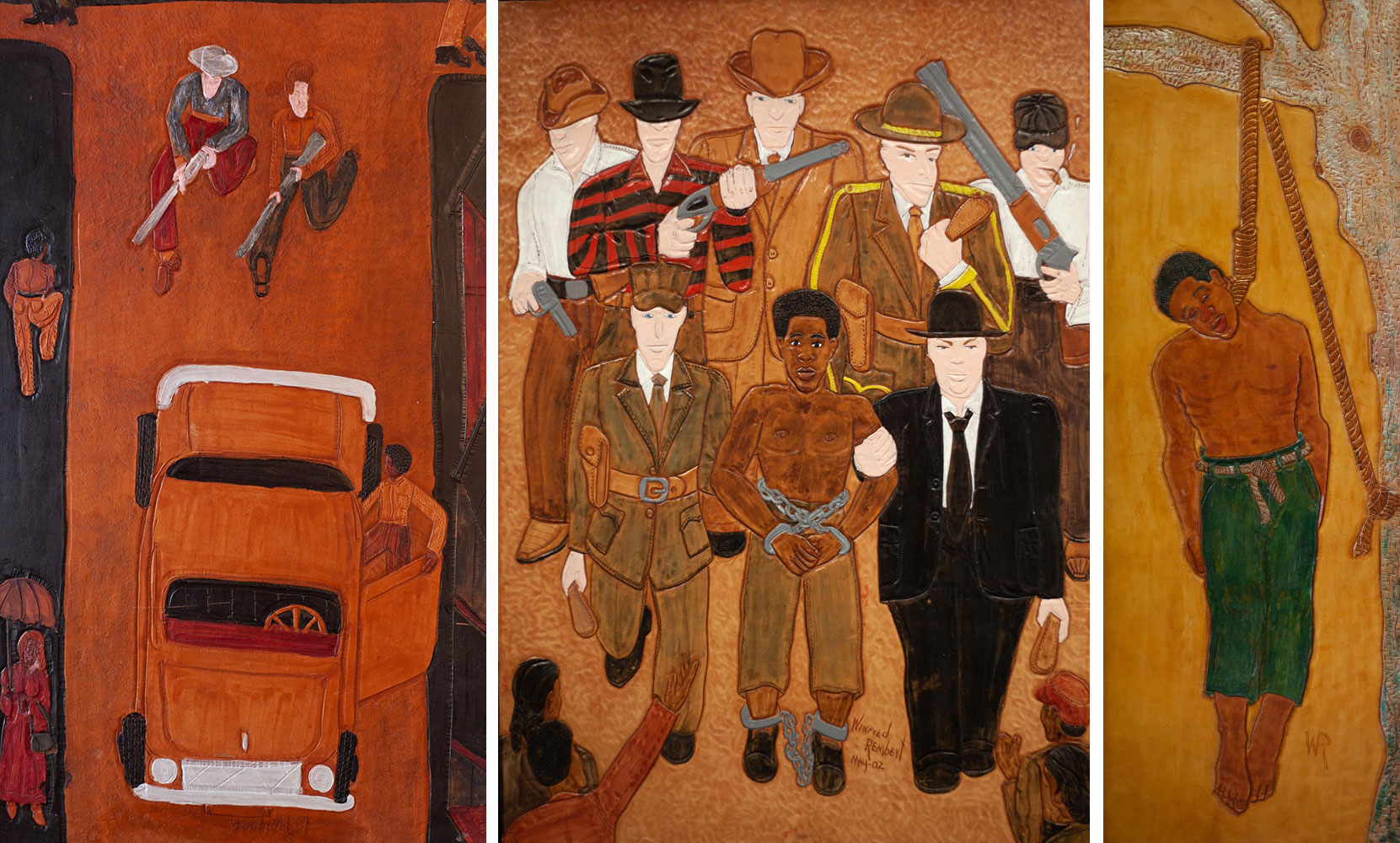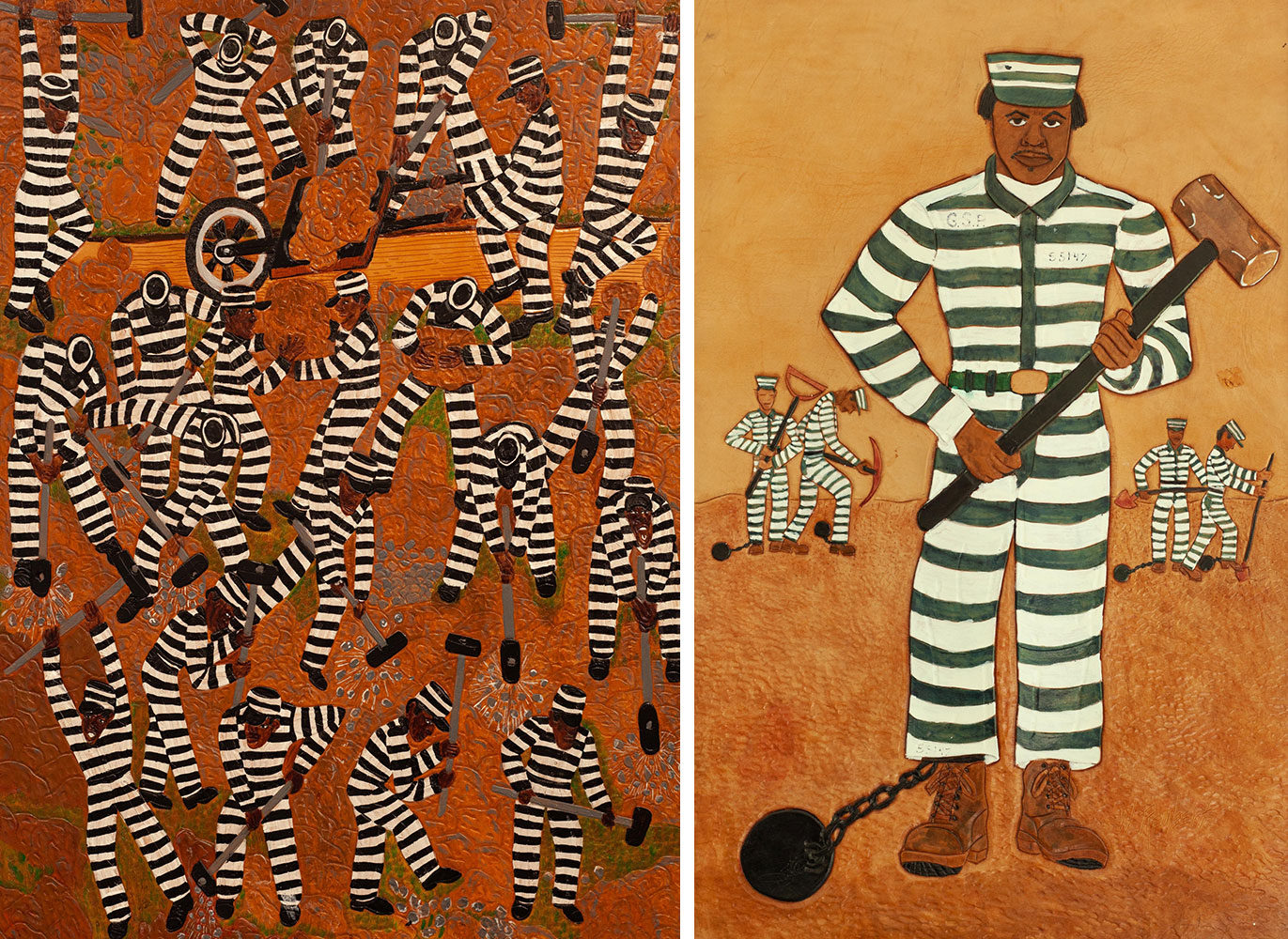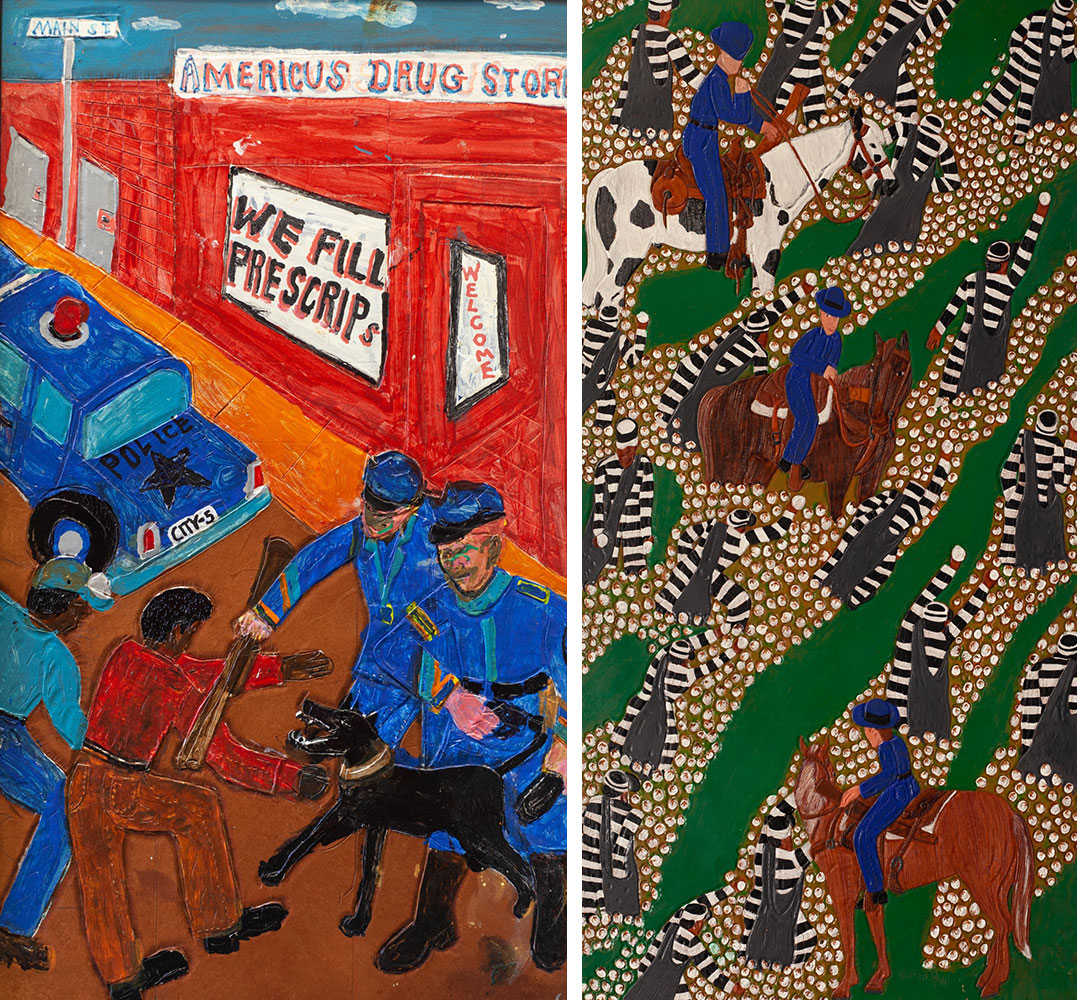ART CITIES: N.York-Winfred Rembert
 Winfred Rembert was an artist from Cuthbert, Georgia who lived and worked in New Haven, CT. His artwork, painted on carved and tooled leather, displays memories of his youth—Black life in the Jim Crow South. His artistic vision calls forth vivid scenes from Georgia cotton fields and colorful characters from the juke joints and pool halls of Cuthbert. They also reveal his encounters with racial and police violence in the aftermath of a civil rights protest, and the seven years he spent on Georgia chain gangs.
Winfred Rembert was an artist from Cuthbert, Georgia who lived and worked in New Haven, CT. His artwork, painted on carved and tooled leather, displays memories of his youth—Black life in the Jim Crow South. His artistic vision calls forth vivid scenes from Georgia cotton fields and colorful characters from the juke joints and pool halls of Cuthbert. They also reveal his encounters with racial and police violence in the aftermath of a civil rights protest, and the seven years he spent on Georgia chain gangs.
By Dimitris Lempesis
Photo: Fort Gansevoort Archive
The exhibition “Winfred Rembert: 1945-2021“ recounts the pivotal events from the artist’s harrowing youth through an assembly of twenty of his distinctive tooled and dyed leather paintings. Rembert’s life story, which began in 1945 in the Jim Crow era of the American South, and concluded in New Haven, Connecticut, where he died in March 2021, is one of perseverance and resistance in the face of racial violence and inequity, and of the power of art as a form of witness and reckoning. Winfred Rembert was thrown in jail after a Civil Rights demonstration in 1965 and survived a near lynching in 1967, followed by seven years in the Georgia prison system from a twenty seven-year sentence. He was taught how to tool leather while in prison from “T. J. the Tooler” who was allowed to create tooled leather items such as billfolds. Rembert moved North after his release from prison and spent most of his life thereafter in New Haven. In 1996, at the age of 51 and with encouragement from his wife, Patsy, he decided to create art on leather and began documenting his memories of life in Georgia in an outpouring of narrative paintings comprised of dye on carved and tooled leather. Rembert’s body of autobiographical paintings brings together a technical mastery of leather working and talent for draftsmanship with a vivid memory and a gift for color and composition. On view in the exhibition, “All Me” (2002) depicts a mass of overlapping bodies in prison stripes covering the entire surface of the work. By eliminating illusionary depth from the picture, Rembert dissolves individual figures into a semi-abstract pattern comprised of undulating lines. The various positions of the prisoners’ ochre-handled hammers inflect the neutral tones of the composition with dynamic movement and frenetic energy. Collectively, the figures represent the multiple personas Rembert adopted to survive the brutalities of prison life. Simultaneously, the artist obscures the faces of his subjects, rendering them anonymous and conveying viscerally the inhumane treatment of incarcerated individuals. As Rembert described this work, “Each person in the picture has a role to play. I didn’t want to play any of the parts, but I had to be somebody. I couldn’t walk around and be nobody, so I became all of them. It’s like I was more than one person inside myself. In fact, I think if I hadn’t decided to play the All Me role on the chain gang, I wouldn’t have made it. Taking that stance “All Me” saved me”. By contrast, a more minimal painting on view entitled “The Getaway” (2015) depicts Rembert in the act of fleeing from a civil rights demonstration in a stolen car to escape physical harm by two shotgun-toting white assailants. For this work, Rembert utilized a narrow piece of leather, highlighting the verticality of the road and the impending forward trajectory of the vehicle. Aerial perspective and close cropping of the street focus the viewer’s attention on the central action of this scene with its cinematic intensity and suspense. The flat terracotta-colored ground, bookended by two black vertical stripes, exemplifies Rembert’s considered arrangement of pictorial space. Having survived a near-lynching in 1967, Rembert’s artistic practice became a vital outlet through which he confronted the enduring trauma of his experience. The haunting allegorical painting entitled “Almost Me” (1997) depicts with a powerful visual economy the fate he narrowly escaped. Here, the physical gravity of the limp body hanging from a noose echoes the emotional gravity of the scene’s unequivocal finality. By eliminating extraneous details from the surroundings, Rembert’s image invites direct confrontation with this difficult subject, creating space for contemplation and catharsis. With its single figure, Almost Me speaks to both the countless inhumane crimes and the everyday acts of racial oppression that have defined America’s history and culture to this day.
Photo: Winfred Rembert, Wilson Brothers, Dye on carved and tooled leather, 29.5 x 34.5 inches, © Winfred Rembert Estate, Courtesy Winfred Rembert Estate and Fort Gansevoort
Info: Fort Gansevoort, 5 Ninth Avenue, New York, NY, USA, Duration: 8/10/2021-22/1/2022, Days & Hours: Tue-Sat 10:00-18:00, www.fortgansevoort.com




Center: Winfred Rembert, The Walk, 2002, Dye on carved and tooled leather, 37.25 x 26.25 inches, © Winfred Rembert Estate, Courtesy Winfred Rembert Estate and Fort Gansevoort
Right: Winfred Rembert, Almost Me, 1997, Dye on carved and tooled leather, 31.25 x 11.75 inches, © Winfred Rembert Estate, Courtesy Winfred Rembert Estate and Fort Gansevoort

Right: Winfred Rembert, Self-Portrait, 1997, Dye on carved and tooled leather, 32.5 x 21.25 inches, © Winfred Rembert Estate, Courtesy Winfred Rembert Estate and Fort Gansevoort

Right: Winfred Rembert Picking Cotton with Boss Man, 2007, Dye on carved and tooled leather, 58.5 x 30.25 inches, © Winfred Rembert Estate, Courtesy Winfred Rembert Estate and Fort Gansevoort




